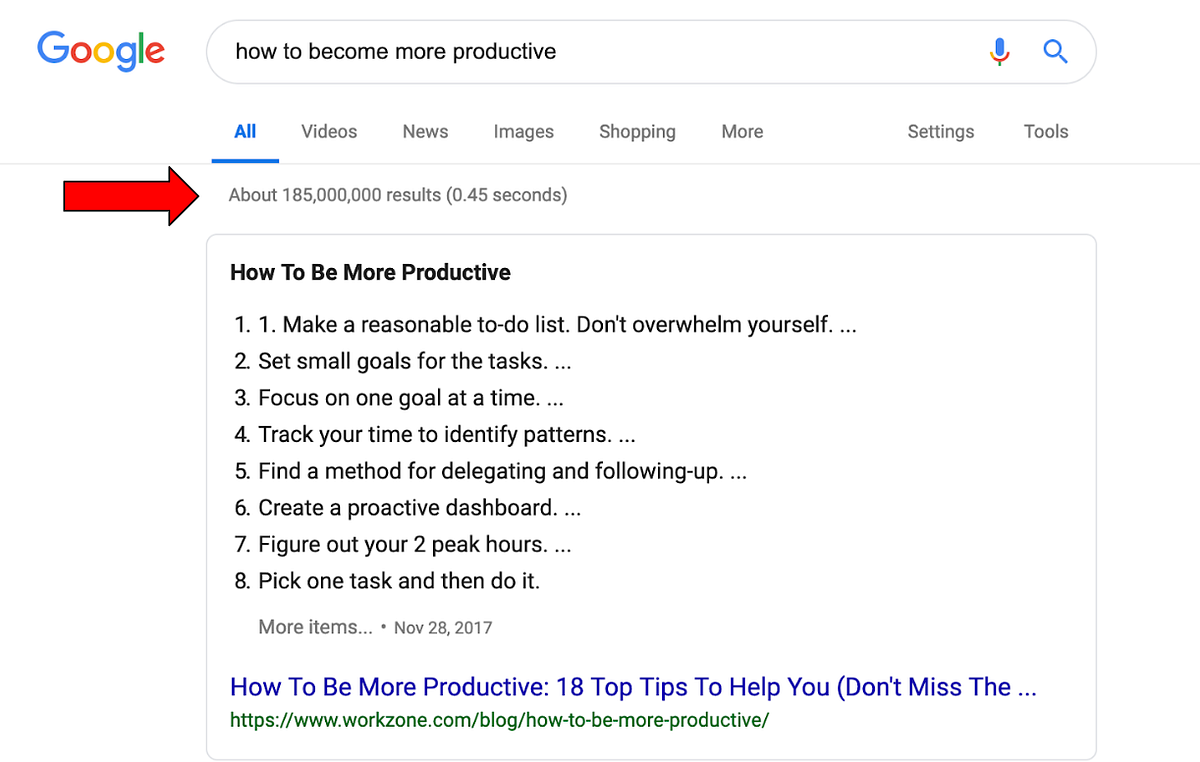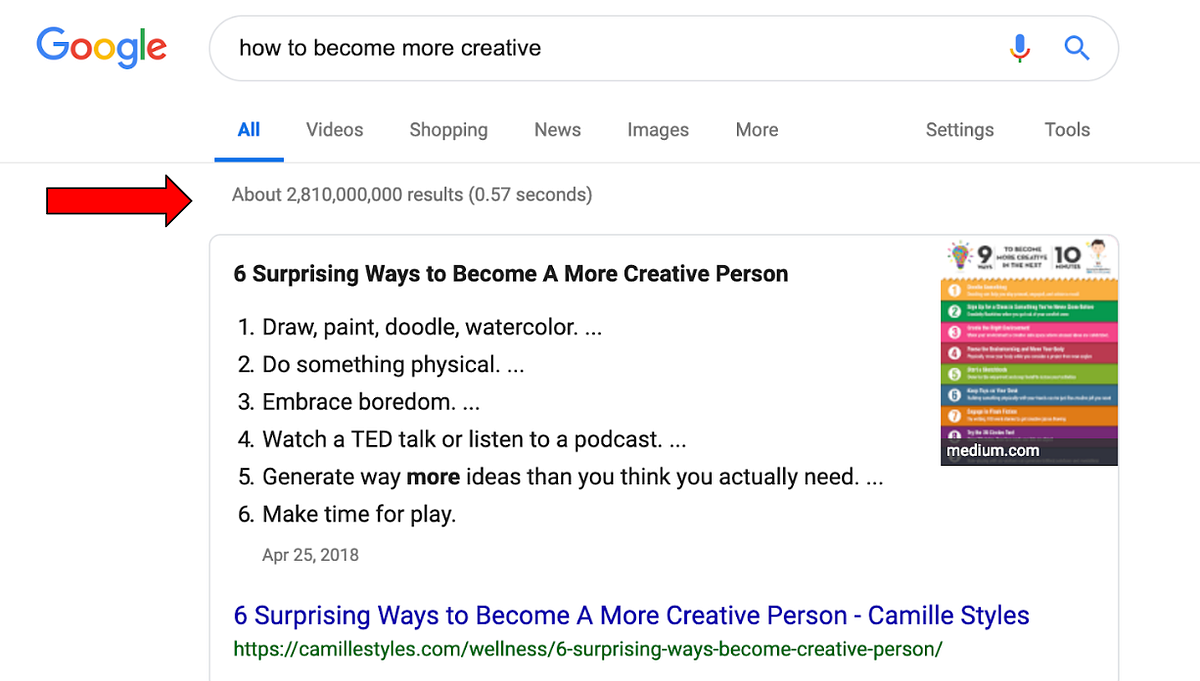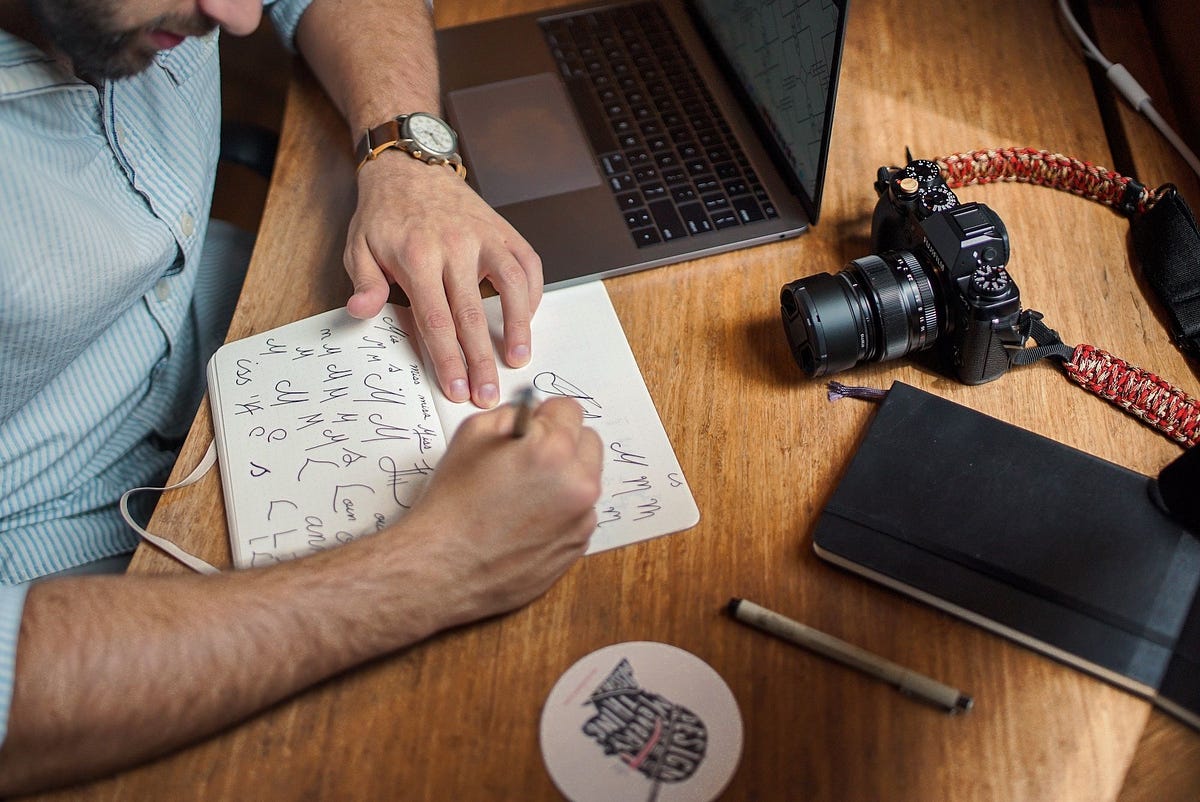Wow, what a productive baby.
Said no one ever.
Imagine a toddler walking around the house with a Fitbit, a pocket planner, and a cup of coffee, saying:
“Everything from my morning play time to my afternoon PB&J gets ranked in a corresponding quadrant. Gosh, I just love the Eisenhower Matrix!”
Yeah, right.
Children have no concept of productivity for a simple reason — it isn’t natural. Productivity is a man-made concept, evolved from an ever-increasing number of activities, responsibilities, and daily obligations.
Observe young children long enough, and our innate desire to create becomes glaringly obvious. From the moment we’re born, we want to see, touch, and experience new things.
Whether that takes the form of inventing a new game, solving an unfamiliar problem, or posing an interesting question, human beings are inherently creative.
Compare the average child’s yardstick of a “good day” to that of the average working professional, and it’s easy to see why 85 percent of people hate their jobs.
Child: Did I get to make, or try, something cool today?
Versus
Adult: How much stuff did I get done today?
If you’ve followed me for a while, you know I enjoy discussing the subject of productivity. You may also know I created a company that sells customizable online forms for time-strapped businesses, organizations, and individuals.
But would I call productivity my passion? Nope, not even close; time management tools, techniques, and strategies just allow me (and our 4.3 million users) to spend more time being creative and less time on repetitive tasks.
My childhood love for “making cool things” never went away; it’s why I learned to code, it’s why I created Jotform, and it’s why I still harvest olives with my family in Turkey every winter.
A quick Google search reveals that I’m not alone. Approximately 185 million search results appear for the query “how to become more productive.”
That sounds like a lot, until you compare it with the 2.81 billion search results for “how to become more creative.”
Clearly, most of us are more interested in learning how to embrace our inner Picasso than how to manage our to-do lists. But how did we lose something that we had from birth?
Why we stopped being creative
The Italians have a saying that encapsulates this innate desire: Cosa fai di bello? Literally translated, it means “What do you do of beauty?” However, the phrase signifies “What have you been up to, lately?”
The assumption that you have recently created something beautiful is built into the phrase. Unfortunately, our collective answer is often “nothing.” And that’s a problem, both personally and economically.
“The world is changing at such a blistering pace that businesses without creativity at their core are doomed,” says Tham Khai Meng, co-chairman and worldwide chief creative officer of Ogilvy & Mather.
“One reason Silicon Valley is doing all the invention, I suspect, is because it’s populated by kids who slipped through the net. With the irreverence of youth still in them, they challenge, take risks and don’t care about what people think.”
Recently, I came across an interesting study that put the issue into perspective. The story goes like this:
NASA needed help measuring the creativity of their rocket scientists and engineers. So, they called on university professors and research scientists George Land and Beth Jarman to give them a hand.
The duo developed a special test to assess creative problem-solving abilities, which pleased NASA. However, the exam itself opened the door to some much bigger questions:
Where does creativity come from? And are we born with it or is it learned?
The professors sought to answer these questions by giving the test to 1,600 children between the ages of 4 and 5. A full 98 percent of these kids scored in “the genius” category.
However, that’s not even the most interesting part. The study found that only 30 percent of the same children later tested as “geniuses” at age 10, and only 12 percent of them landed in that category at age 15.
Even more depressing? A mere 2 percent of adults make the cut.
Incidentally, the idea that children lose their creativity over time is nothing new. Even the late Pablo Picasso is quoted as saying:
“Every child is an artist. The problem is how to remain an artist once we grow up.”
While the research study provides no definitive cause for creative decline, Gavin Nascimento, founder of aNewKindOfHuman.com, places the blame on our educational systems:
“The reasoning for this is not too difficult to apprehend; school, as we plainly call it, is an institution that has historically been put in place to serve the needs of the ruling class, not the common people.”
Unfortunately, Nascimento probably isn’t far from the truth. The educational systems of several leading countries are based on the 19th-century Prussian model, which emphasizes obedience over creativity. Rote memorization, multiple choice test-taking, and adherence to sometimes arbitrary rules are rewarded; challenging familiar paradigms is discouraged.
Consequently, many young adults enter the workforce with a faulty assumption: Success comes to those who follow the rules, possess specialized knowledge, and produce the most work.
The irony, of course, is corporate executives are increasingly begging their employees for more “out of the box” ideas. Some even believe the future’s most important innovations will come from deep generalists who don’t follow the crowd.
Of course, recognizing those unconventional ideas when they arise, and having the courage to act upon them, is another problem entirely.
Perhaps our schools need creative reformation. But what about those of us who may have already been “brainwashed?”
While I don’t have a definitive answer, I have come across a few helpful tips for nurturing creativity:
How to support creativity with productivity
1. Stop imitating others. Find what works for you
As I’ve written before, self-help often promotes the idea that we can copy our way to success. We study common characteristics of the people we want to emulate, hoping we, too, will reach our goals.
Say someone greatly admires Salvador Dali for his artistic expression. He learns from reading an article that the painter credited much of his creativity to a specific style of napping. The person then purchases a Spanish-style armchair before practicing the following steps:
- Sleep sitting upright.
- Hold a key in your hand, between your fingers.
- Relax and fall asleep.
- As you fall asleep, you’ll drop the key.
- Wake up inspired.
Obviously, this is an extreme way to illustrate the flaws of emulation. Most of us wouldn’t expect to transform into a creative genius after napping with a key every afternoon.
However, I’m going to go out on a limb and suggest that copying things like sleep schedules, exercise practices, and reading lists may be just as silly. Creative expression seems to come from ignoring what others are doing and forging your own path.
Imitate what appears to work for others and you just might make yourself crazy.
For example, some studies suggest early birds are more likely to be successful. However, others say those who burn the midnight oil are both more creative and more intelligent.
Take such information as absolute truth, and you’ll feel torn between the win-lose choice of paying your bills versus creative fulfillment.
This is why I try not to take research, advice, or personal experiences at face value. Look hard enough, or wait long enough, and you’ll find another source advocating the opposite approach.
True creativity AND productivity flourish when you know what works best for you. Take what others say, including me, with a big grain of salt.
2. Follow a “maker’s schedule”
Several years ago, Y Combinator co-founder Paul Graham wrote an article that left budding inventors, innovators, and entrepreneurs around the world feeling vindicated.
Graham articulated why many people often feel unfulfilled, drained, and unproductive when working in the corporate world. The piece outlines the difference between two types of unspoken schedules: The maker’s schedule and the manager’s schedule.
Most executives, managers, and leaders are ruled by the appointment book. Their day is broken into hour-long intervals consisting of numerous meetings. The manager is constantly switching her attention from one task to the next and measures her productivity by how many good decisions she makes within a given day.
This schedule is great for managing a business, but it’s terrible for creating anything original. Conversely, makers are more likely to excel with context scheduling. Their creative expression demands huge chunks of time for focused work.
“When you’re operating on the maker’s schedule, meetings are a disaster,” Graham says. “A single meeting can blow a whole afternoon, by breaking it into two pieces each too small to do anything hard in… It doesn’t merely cause you to switch from one task to another; it changes the mode in which you work.”
Translation: One poorly scheduled mid-day meeting can ruin an entire day’s worth of creative output. Interestingly, Graham is able to follow a maker’s schedule, despite his leadership position, by using block scheduling.
“I wouldn’t be surprised if there start to be more companies like us,” he says. “I suspect founders may increasingly be able to resist, or at least postpone, turning into managers, just as a few decades ago they started to be able to resist switching from jeans to suits.”
3. Put measures in place to reduce “inflow”
Finally, discourage multi-tasking — the arch-nemesis of creativity — by applying effective task management measures. Srinivas Rao of Unmistakable Creative calls this process “reducing inflow.”
“On average, we’re making over 300 decisions a day,” Rao says. “A few months ago, I downloaded the dating app Bumble. After a few hours of playing with the app, I realized that every swipe was a decision. That was just the beginning of the decision fatigue that results from excessive consumption.”
Fragment your attention over the course of a day, a week, or a lifetime, and you will likely become a jack of all trades and a master of none.
Rao encourages his clients to embrace some basic productivity hacks that can reduce disruptions and enhance creativity:
- Create another email address: Use an extra email account for non-essential communication and limit your check-ins.
- Install Facebook Newsfeed Obliterator: This Chrome extension actually removes your Facebook newsfeed. You can also quit social media altogether (I haven’t managed that one).
- Go Analog: Schedule one, non-negotiable day per week to completely unplug.
The bottom line: Don’t be productive at the expense of being creative. Not only is creativity the lifeblood of the economy, but it’s part of being human.
Again, I don’t have the answer to help us all become more creative. You’ll have to keep Googling or find these solutions within yourself.
But, I do feel better when I remember why I’m practicing time management in the first place: so I can make more cool things.

















Send Comment: